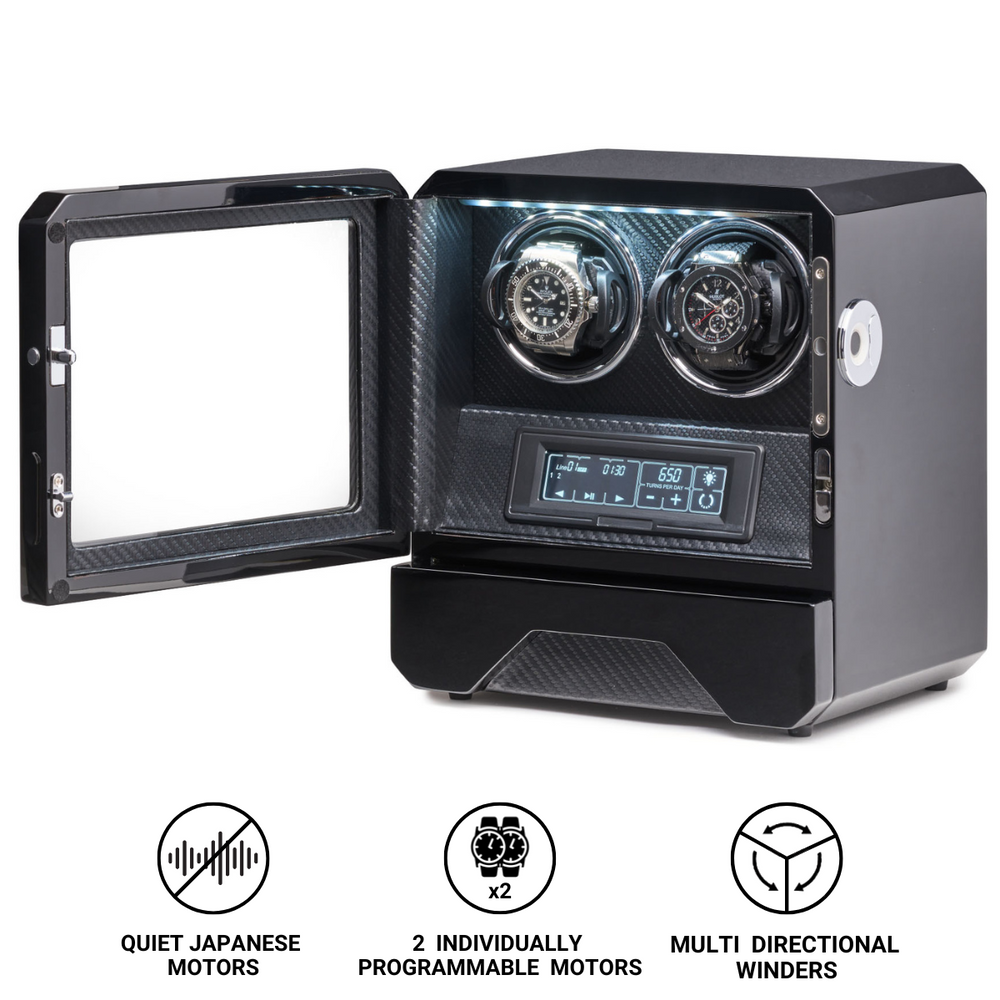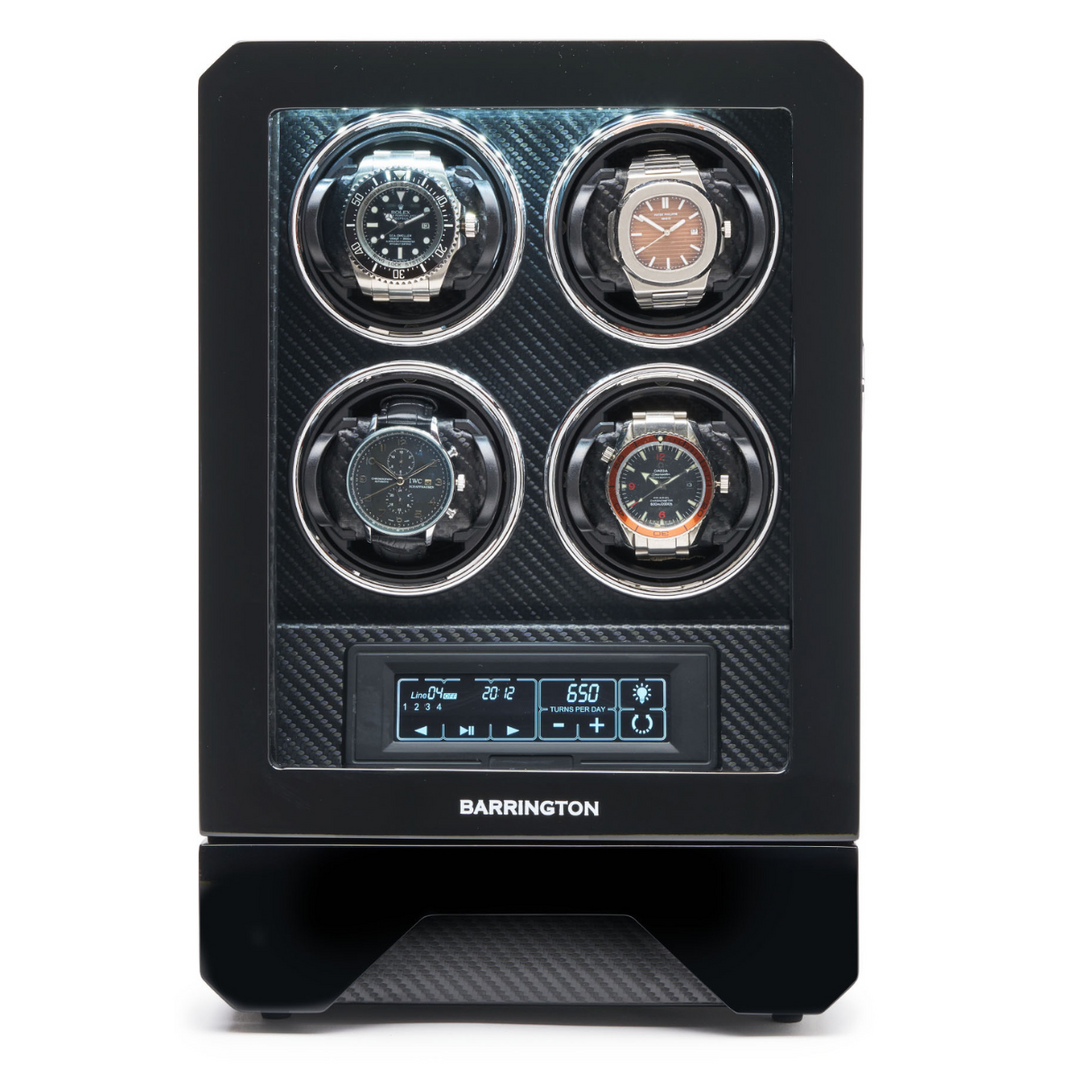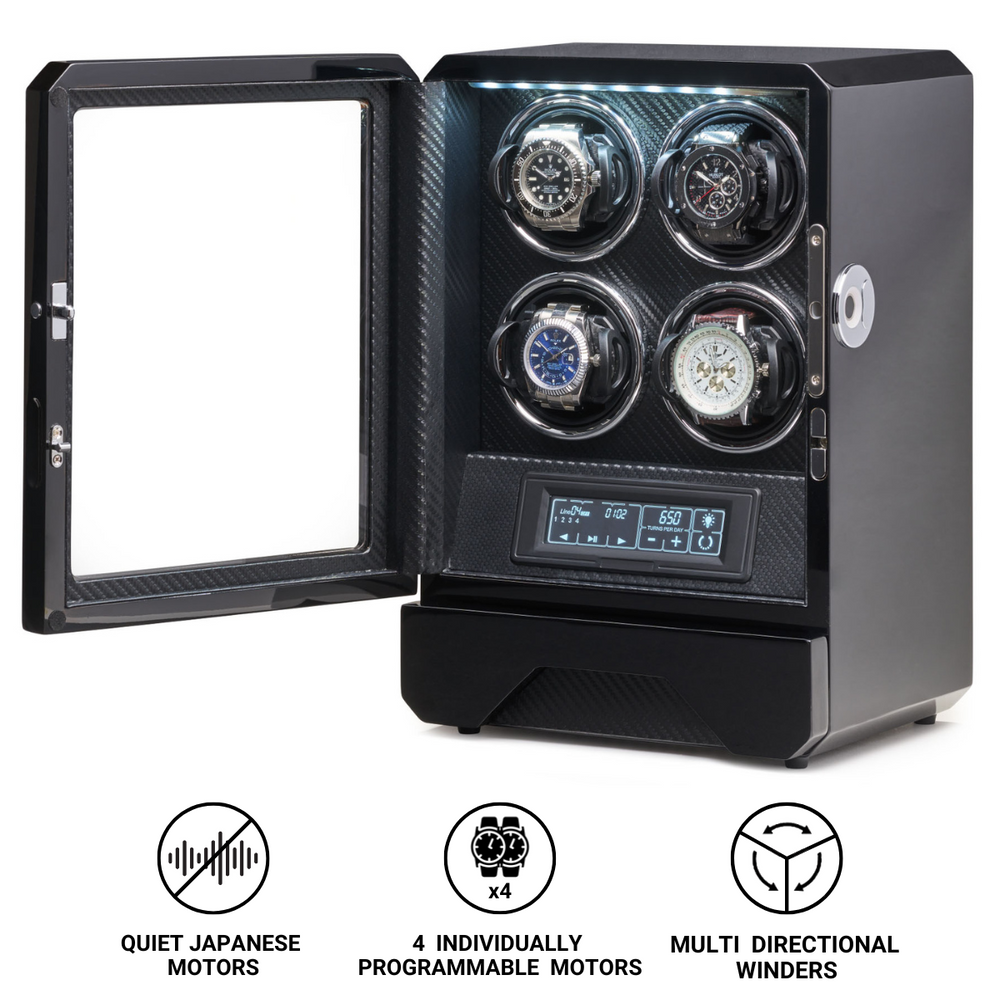What is Central Seconds?
Among the many elements that define a wristwatch, few are as visually integral as the seconds hand. Whether sweeping smoothly across the dial or advancing in precise increments, it brings life to the timepiece, turning static geometry into motion. When this hand is positioned at the centre of the dial, aligned with the hour and minute hands, it is known as a central seconds hand. The concept may seem simple today, but its evolution tells a story of technical innovation, aesthetic refinement, and the very essence of how we perceive time on the wrist.
The central seconds hand is more than an indicator of passing moments. It reflects mechanical sophistication, accuracy, and a design feature that has profoundly influenced the identity of modern watchmaking.
The Origins of the Central Seconds Hand
In the earliest mechanical watches, including pocket watches, there was no seconds hand at all. The focus was on hours and minutes, as precision beyond that was unnecessary for daily life. Only with the development of more accurate escapements in the 18th century did the seconds hand appear, initially in the form of a small sub-dial known as a small seconds or subsidiary seconds display. This was typically located at six o’clock, directly connected to the fourth wheel of the gear train.
The idea of placing the seconds hand at the centre of the dial emerged later, driven by both aesthetic and technical motivations. The first examples appeared in the late 18th and early 19th centuries, but they remained rare due to mechanical complexity. Traditional watch movements were not designed to support a centrally mounted seconds hand without modification. It required an additional gear train or a reconfigured layout that allowed the seconds wheel to be coaxial with the hour and minute hands.
The practical advantages of a central seconds display were clear: improved readability and a more dynamic visual balance. However, the technical challenges delayed its widespread adoption until the 20th century, when wristwatches replaced pocket watches as the dominant form of personal timekeeping.
The Rise of Central Seconds in Wristwatches
As wristwatches gained popularity during the early 1900s, watchmakers began to experiment with more efficient ways of displaying time. The smaller case sizes and new movement architectures offered opportunities to rethink the position of the seconds hand.
The breakthrough came during the 1930s and 1940s, when the centre seconds or sweep seconds design became increasingly common. One of the driving forces behind this was the rise of precision timing and chronometry in scientific, medical, and military contexts. For pilots, doctors, and engineers, the ability to observe seconds accurately and clearly at the centre of the dial was essential.
Watchmakers developed various mechanisms to achieve this configuration. Some used indirect drive systems, where an additional wheel transmitted motion from the fourth wheel to the central seconds pinion. Others re-engineered movements entirely to incorporate direct-drive seconds, where the fourth wheel was placed at the dial’s centre.
By the 1950s, the central seconds hand had become the dominant layout in wristwatches, largely replacing small seconds dials except in specific stylistic or technical contexts. The sweeping motion of the central hand became synonymous with mechanical watches, symbolising continuous and precise motion, the heartbeat of horology.
Mechanical Architecture Behind Central Seconds
To understand the central seconds hand, it is essential to grasp the underlying mechanics that make it possible. In a standard movement, the power from the mainspring travels through a series of gears: the centre wheel, which turns once per hour; the third wheel; and the fourth wheel, which completes one rotation per minute. The fourth wheel typically drives the seconds hand, hence its placement at six o’clock in traditional small-seconds layouts.
To move the seconds hand to the centre, the watchmaker must either:
-
Redesign the gear train layout so that the fourth wheel is positioned at the centre. This is the direct-drive central seconds approach, considered the most precise and mechanically elegant solution.
-
Add an auxiliary transmission system, often involving an intermediate wheel that connects the fourth wheel to a pinion on the central axis. This indirect-drive method is easier to implement but can lead to minor drawbacks, such as additional friction or a faint jitter in the seconds hand’s motion.
In both configurations, the central seconds hand rotates once every 60 seconds, marking the steady rhythm of the escapement. Achieving smooth, stable motion requires careful engineering and fine lubrication. Any imbalance, resistance, or imperfection can cause irregular movement or increased wear on the gear teeth.
Central Seconds and the Aesthetic Balance of the Dial
From a design standpoint, the central seconds hand transformed the appearance of the watch dial. It introduced a sense of dynamism and symmetry that small-seconds designs often lacked. With three hands emanating from a single central point, the dial became visually unified, offering an intuitive reading of time at a glance.
This design also allowed for cleaner layouts and larger hour markers, particularly beneficial in tool watches and sports models. Military watches, for example, adopted the central seconds configuration almost universally by the mid-20th century, valuing its clarity and ease of reading.
The constant motion of the seconds hand also gave the watch an emotional dimension. It served as a visible indicator of life within the mechanism, a quiet reassurance that the watch was running as intended. For many collectors, the sweeping hand remains the symbol of mechanical vitality, a poetic manifestation of passing time.
Central Seconds in Chronometers and Precision Watches
The introduction of the central seconds hand coincided with a growing emphasis on precision in timekeeping. Observatory trials and chronometer certifications demanded watches capable of measuring short intervals with exceptional accuracy. The central seconds hand became the natural companion of these advancements, allowing the wearer to observe performance with unmatched clarity.
In medical and scientific applications, such as the work of doctors timing heartbeats or laboratory measurements, the central seconds hand offered superior visibility compared to subsidiary seconds. This practical advantage contributed to its adoption in doctor’s watches and chronographs designed for timing short events.
In chronometers and certified movements, the central seconds hand often became a showcase for the watchmaker’s skill. Its smooth, uninterrupted sweep across the dial was evidence of perfect regulation and balanced amplitude, a visible expression of mechanical harmony.
The Emotional and Symbolic Role of the Central Seconds Hand
The movement of the central seconds hand carries a unique emotional resonance. It captures the essence of horology: precision, rhythm, and the continuous passage of time. Watching the hand glide across the dial evokes a sense of calm and continuity, a visual metaphor for the steady heartbeat of the movement.
Collectors often refer to the sweeping seconds hand as a sign of life, a reminder that beneath the dial, hundreds of components are working together in perfect synchrony. Unlike quartz watches, where the hand jumps once per second, a mechanical central seconds hand typically advances in smaller, imperceptible increments determined by the frequency of the balance wheel. At 28,800 vibrations per hour, for example, the hand moves eight times per second, creating the illusion of a smooth flow.
This gentle, fluid motion is part of what makes mechanical watches so captivating. It is not just a technical detail but a poetic one, the visible signature of craftsmanship and time itself.
Central Seconds in Chronographs
Chronographs represent a fascinating variation in the story of central seconds. In these watches, the main central seconds hand is often used as the chronograph seconds counter, while a smaller sub-dial records running seconds. This configuration highlights the versatility of the central seconds position, serving both functional and aesthetic purposes.
When the chronograph function is activated, the central hand springs into motion, sweeping around the dial in precise alignment with the scale on the chapter ring. The use of a central seconds counter allows for rapid and accurate reading of elapsed time, a critical feature for sports, aviation, and scientific timing.
Some chronographs combine both running and chronograph seconds hands at the centre, differentiated by colour, shape, or layering, a testament to the complexity and ingenuity of modern movement design.
The Central Seconds in Modern Watchmaking
Today, the central seconds hand remains the most common configuration in wristwatches, both mechanical and quartz. Its dominance is the result of decades of refinement and consumer preference for balanced, readable dials.
In high-end mechanical watchmaking, the execution of the central seconds hand continues to reflect technical excellence. Brands such as Rolex, Omega, and Grand Seiko have perfected movements that deliver an exceptionally smooth, stable sweep, often enhanced by high-frequency escapements or proprietary movement architectures.
Meanwhile, independent watchmakers use the central seconds hand as a design focal point, experimenting with skeletonised hands, coloured tips, or offset geometries to express individuality. Whether on minimalist Bauhaus-inspired dials or complex haute horlogerie creations, the central seconds hand remains a unifying element of legibility and motion.
Direct and Indirect Drive: Technical Distinctions
A subtle yet important distinction exists between direct and indirect central seconds mechanisms.
-
Direct drive means the seconds hand is mounted directly on the axis of the fourth wheel, ensuring precise motion with minimal friction. This configuration is favoured in high-quality and chronometer-grade movements, where stability and long-term durability are paramount.
-
Indirect drive, by contrast, uses an intermediary gear or spring to transmit motion from the fourth wheel to the central axis. While easier to integrate into existing movement designs, this method can produce a slight jitter or uneven motion in the seconds hand, though modern engineering has largely mitigated these effects.
The choice between these two systems often reflects the philosophy of the watchmaker: purity and technical excellence on one hand, practicality and versatility on the other.
The Central Seconds Hand in Quartz Watches
The advent of quartz technology in the 1970s introduced a new kind of central seconds motion. In quartz watches, the seconds hand typically jumps once per second, advancing in discrete steps rather than a continuous sweep. This was not a limitation but a deliberate design choice, serving to distinguish quartz accuracy from mechanical smoothness.
Modern watchmakers have revisited the concept of a sweeping seconds hand in high-frequency quartz and hybrid movements. Brands like Grand Seiko have developed Spring Drive technology, combining mechanical energy with electronic regulation to achieve an incredibly smooth central seconds motion, perhaps the purest expression of precision and poetry in one.
Conclusion
The central seconds hand may appear to be a simple feature, but it encapsulates centuries of horological evolution. From its roots in scientific precision and military necessity to its place in the refined aesthetics of modern design, it has become an emblem of both function and artistry.
It unites the technical with the emotional: the mechanical rhythm beneath the dial and the visible flow of time across it. Each sweep of the hand is a reminder that a watch is not merely a tool but a living mechanism, one that captures the relentless continuity of time itself.
In every graceful movement of a central seconds hand lies the heartbeat of horology, a silent and perpetual rhythm that continues to define the beauty of watchmaking.









